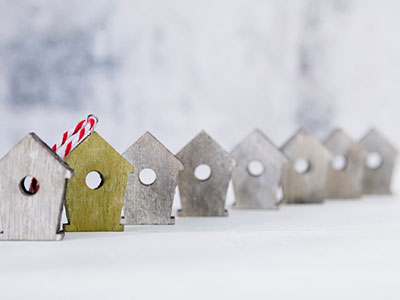Fannie Mae Multifamily Loans
Fannie Mae Multifamily loans offer commercial real estate investors access to some of the most competitive financing options available in the market. As one of the largest sources of multifamily lending capital in the U.S., this platform supports the purchase and refinancing of properties such as apartment complexes (five units or more), senior living communities, student housing, and more.
For investors looking to expand their portfolio with cost-effective financing, Fannie Mae loans present a strong opportunity provided you understand how the program works and whether it aligns with your investment goals.

Advantages / Disadvantages of Fannie Mae Loans
Advantages:
Fannie Mae Multifamily financing offers a wide range of benefits that make it a strong option for many commercial real estate investors:
-
Student and Military Tenant Flexibility:
Up to 80% of a property’s tenants may be students or military personnel. If this threshold is exceeded, Fannie Mae offers specialized programs for those housing types.
-
Flexible Loan Terms:
Borrowers can choose amortization schedules ranging from 5 to 30 years, allowing them to tailor payments to their investment strategy.
-
High Loan-to-Value (LTV) Ratios:
These loans offer up to 80% LTV on conventional properties—providing more accessible capital compared to more conservative lending options.
-
Broad Property Eligibility:
In addition to standard multifamily properties, eligible assets may include senior housing, manufactured home communities, and more, offering wide financing applicability.
Disadvantages:
Despite their strengths, Fannie Mae Multifamily loans may not be ideal for every borrower. Consider the following challenges:
-
Strict Occupancy Rules:
Properties must adhere to specific tenant mix requirements, including limits on commercial space or student tenants, depending on the loan type.
-
Borrower Eligibility Requirements:
Loans are available only to experienced U.S.-based borrowers. Requirements typically include:
- Net worth equal to or greater than the loan amount
- 9–12 months of debt service liquidity post-closing
- Credit score of 680+
- No recent negative credit events
- Proper ownership structure for indirect foreign ownership
-
Extensive Documentation:
These loans involve rigorous documentation and due diligence. The closing process can take longer due to these requirements, which may limit appeal for borrowers with tight timelines.
Fannie Mae Standard DUS
The most commonly used loan product, the Standard DUS, is ideal for purchasing or refinancing stabilized multifamily properties with five or more units. Loan amounts typically start at $5 million, with a $7 million minimum in select markets.
Fannie Mae Small Loans
Designed for smaller multifamily properties with 5 to 50 units, this program offers loan amounts from $750,000 to $5 million (up to $7 million in eligible markets). These loans are limited to existing, stabilized properties.
Fannie Mae Affordable Housing (MAH)
This specialized loan program supports the preservation and development of affordable housing. It offers long-term, competitive financing for properties participating in:
- LIHTC (Low-Income Housing Tax Credit) programs
- HUD Section 8 HAP contracts
- Section 202 and 236 housing
- Rural Housing Service Section 515 (existing only)
Terms range from 5 to 30 years, with flexible underwriting and both fixed and variable interest rate options.
Fannie Mae Green Financing
For environmentally responsible investments, Green MBS loans offer competitive pricing and additional loan proceeds for energy and water-efficient upgrades. Properties with Green Building Certifications may qualify for even better terms.
Fannie Mae Manufactured Housing
Targeted at high-quality manufactured housing communities, these loans support affordability and sustainability. Properties must meet condition and star rating benchmarks. Fixed rates with 5-30-year terms and interest-only options may be available, along with flexible prepayment structures.
Fannie Mae FAQ’s
Fannie Mae Multifamily loans have been a cornerstone of apartment and multifamily property financing for more than 30 years. Through its Delegated Underwriting and Servicing (DUS) platform, Fannie Mae streamlines the lending process, making it more accessible for qualified real estate investors.
These loans offer several advantages that make them a compelling option for multifamily financing:
- Non-recourse structure protects borrowers from personal liability (with standard carve-out exceptions).
- Fixed interest rates for up to 30 years provide long-term payment predictability.
- High leverage, with loan-to-value (LTV) ratios up to 80%, allows investors to finance more with less upfront capital.
This combination of flexible terms, competitive rates, and borrower protections makes Fannie Mae loans highly attractive compared to traditional financing options in the commercial real estate space.
Borrowers must meet several eligibility and documentation requirements to be considered for a Fannie Mae Multifamily loan. These typically include:
- Completed Loan Application: Including detailed information about the property and intended use of funds.
- 12-Month Operating Statement: A trailing profit and loss summary of the property’s performance.
- Current Rent Roll & Occupancy Report: Detailing all tenants, lease end dates, and occupancy metrics.
- Property Photos: Interior and exterior images, either submitted directly or via a property website.
- Personal Financial Statement: Showing a clear picture of the borrower's assets, liabilities, and current real estate holdings.
- Multifamily Experience: If the borrower owns other multifamily properties, a portfolio overview is required. If not, a real estate resume outlining relevant experience should be included.
Fannie Mae’s process is thorough, but it’s designed to ensure the long-term stability of both the borrower and the investment. By working with experienced lenders and providing a detailed financial profile, qualified borrowers can unlock a powerful financing solution for their multifamily investments.
Get In Touch With Us
We understand that every dream is unique and personal. If you're ready to take the next step or simply have questions.







